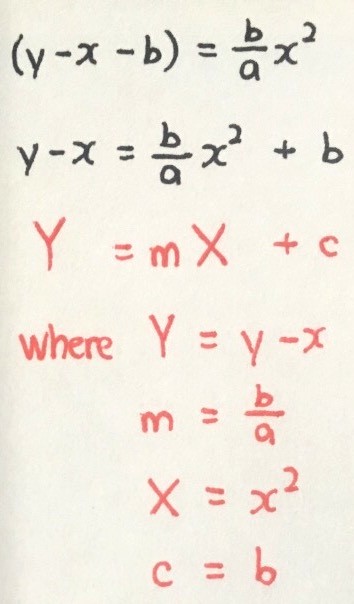Eric Nicholas K's answer to Georgia Jansen's Secondary 4 A Maths Singapore question.
done
{{ upvoteCount }} Upvotes
clear
{{ downvoteCount * -1 }} Downvotes
I have no graph paper so I can’t help you with the graph.
Remember that in the form Y = mX + c,
Y can only contain mixture of x and/or y (this includes their lg, ln, squares, square roots and so on), and must not contain unknown variables such as a and b
X can only contain mixture of x and/or y (this includes their lg, ln, squares, square roots and so on), and must not contain unknown variables such as a and b
m can only contain unknown variables such as a and b, and must never contain the main variables x and/or y
c can only contain unknown variables such as a and b, and must never contain the main variables x and/or y
An easy way is to do this.
When writing
something = something + something,
there are three terms correct? (Y, mX and c)
Exactly one of the three terms must not contain any x or y in any form.
It is possible for Y to contain x only, and for X to contain y only, in a minority of instances.
Remember that in the form Y = mX + c,
Y can only contain mixture of x and/or y (this includes their lg, ln, squares, square roots and so on), and must not contain unknown variables such as a and b
X can only contain mixture of x and/or y (this includes their lg, ln, squares, square roots and so on), and must not contain unknown variables such as a and b
m can only contain unknown variables such as a and b, and must never contain the main variables x and/or y
c can only contain unknown variables such as a and b, and must never contain the main variables x and/or y
An easy way is to do this.
When writing
something = something + something,
there are three terms correct? (Y, mX and c)
Exactly one of the three terms must not contain any x or y in any form.
It is possible for Y to contain x only, and for X to contain y only, in a minority of instances.
Date Posted:
4 years ago


